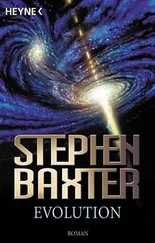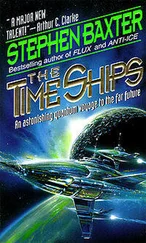car, or car and hotel, as if it was no longer a place adapted for
humanity.
She booked into her hotel, showered and changed, and had her car take her out to JSC, the NASA Johnson Space Center. The car pulled into the JSC compound off NASA Road One, and she drove past gleaming, antiquated Moon rockets: freshly restored, spectacularly useless, heavily guarded from the new breed of antiscience wackos.
She was dismayed by the depression and surliness of the staff who processed her at the NASA security lodge. The mood in Houston seemed generally sour, the people she encountered overheated, irritable. She knew Houston had special problems. The local economy relied heavily on oil and chemicals and was taking a particular beating as the markets fluctuated and dived over rumors of the supertechnology that the Blue children had been cooking up, stuff that would make fossil-fuel technology obsolete overnight. But she had come here with a vague hope that at least at NASA — where they were all rocket scientists, for God’s sake — there might be a more mature reaction to what was going on in the world. But the national mood of fear and uncertainty seemed to be percolating even here.
Dan Ystebo came to collect her. He led her across the compound, past blocky black-and-white buildings and yellowing lawns, the heat steamy and intense. Dan seemed impatient, irritable, his shirt soaked with the sweat of his bulky body. He had spent a week here at her behest, crawling over plans and mock-ups and design documents and budgets, in order to brief her.
Maura had been coopted onto the UN-led international task force that was seeking to investigate and manage all aspects of the Blue-children phenomenon. And she, in turn, had coopted Dan Ystebo, much against his will.
Dan took her to Building 241, where, it turned out, NASA had been running life-support experiments for decades. Now the building was the focus of NASA’s response to the government’s call to return to the Moon, to establish a presence on the Moon alongside the children.
Dan was saying, “It isn’t ambitious — not much beyond space station technology. The modules would be launched to lunar orbit separately, linked together and then lowered as a piece to the Moon’s surface, as close as you like to the kids’ dome. A couple of robot bulldozers to shovel regolith over the top to protect you from radiation and stuff, and there you are, instant Moon base.”
Dan walked her through mocked-up shelters, tipped-over cylinders with bunks and softscreens and simple galleys and bathrooms. Most of the equipment here was thrown together from painted wood panels, but at least Maura got a sense of the scale and layout. She had to get from one shelter to another by crawling along flexible tubes — difficult, but presumably that would be easier in the Moon’s one-sixth gravity. All of this was set out in a huge hangarlike room; fixed cranes ran along the ceiling, and there was a lot of litter on the floor: wood and metal shavings, piled-up plans, hard hats. The sense of rush, of improvisation, was tangible.
“Feels like a mobile-home park,” she said.
“Yeah,” Dan said. He was puffing from the exertion of crawling through the tubes. “Except it will be an even worse place to stay. Remember, you’ll never be able to open a window. The power will come from solar cells. The engineers are looking at simple roll-up sheets you could spread across acres of the lunar surface or drape from a crater wall, whatever. It should be possible to move them around as the lunar day progresses. To survive the two-week nights they say they will need radioisotope thermonuclear generators.”
“More nukes, Dan?”
He shrugged. “In the short term there isn’t much choice. We’re constrained by where the kids came down — in Tycho, one of the roughest places on the Moon. The old NASA plans always showed astronauts colonizing a polar crater, somewhere you could catch the sun all lunar day, and where there would be ice to mine. As it is we’re going to have to haul up everything, every ounce of consumable. Initially, anyhow.”
He led her into the next hangarlike room. Here there was a single construction: a dome of some orange fabric, inflated, with fat tubes running around its exterior. It was maybe eight feet across, five high. Maura saw a small camera-laden robot working its way into the dome through what looked like an extendable airlock.
“This is stage two,” Dan said, “a Constructable Habitat Concept Design. You have your dome, inflated from the inside, with self-deploying columns for strength, and a spiral staircase down the center.”
“What’s the fabric?”
“Beta cloth. What they’ve been making spacesuits out of since Apollo 11. NASA is a somewhat conservative organization. This dome will contain a partially self-contained ecology based on algae. The medics here are looking at electrical muscle and bone stimulation to counteract the low-gravity effects. And regolith mining will get under way. The Moon isn’t as rich as Malenfant’s C-type asteroid, and it is mostly as dry as a bone. But you can make a reasonable concrete from the dust. And the rocks are forty percent oxygen by weight, and there is silicon to make glass, fiberglass, and polymers; aluminium, magnesium, and titanium for reflective coatings and machinery and cabling; chromium and manganese for alloys—”
“Living off the land, on the Moon.”
“That’s the idea. They are working to stay a long time, Maura.”
He led her to a coffee machine. The sludge-brown drink was free, but bad. The lack of fresh coffee was one of the consequences of the world trade minicollapse: something small but annoying, the removal of something she had always taken for granted, a sign of more bad news to come.
Maura asked him how come the NASA people were reacting so badly. “If anybody on the planet is trained to think about cosmic issues, to think out of the box of the here and now, it’s surely NASA.”
“Hell, Maura, it’s not as simple as that. NASA has lacked self-confidence for decades anyhow. Reid Malenfant drove them all crazy. Here was a guy who NASA wouldn’t even hire, for God’s sake, and he just went out there and did it ahead of them. Look at this.” He dug into a pocket and pulled out a cartoon printed off some online source: bubble-helmeted NASA astronauts in a giant, glittering spacecraft being beaten to the Moon by a bunch of raggedy-ass kids in a wooden cart. What s the big deal, guys?
Dan was grinning.
“You shouldn’t look like you enjoy it so much, Dan. Bad for relations.”
“Sorry.”
“So is that it? Hurt pride?”
“Maybe that’s a rational response,” Dan said. “The Blue kids, after all, have to operate within the laws of physics. So the solution they found to space travel must be out there somewhere. How come they got so smart, just sailing up to the Moon like that out of a nuclear explosion, for God’s sake, while we stayed dumb, still flying our Nazi-scientist rockets after decades and terabucks? And besides…”
“What?”
“Rocket scientists or not, the people here are only human, Maura. Some of them have Blue kids too … The good thing is that these NASA types have been dreaming of this, running experiments and pilot plans and paper studies, for decades now. When the call did come they were able to hit the ground running. And they are preparing to be up there a long time.” He eyed her. “That’s the plan, isn’t it, Maura?”
“It’s possible. Nobody knows. We don’t know what needs the children have. They may be genius prodigies at physics and math, but what do they know about keeping themselves alive on the Moon? Our best option may be to offer help.”
Dan looked skeptical. “So that’s our strategy? We imprison them, we nuke them, and now we offer them green vegetables?”
Читать дальше
Конец ознакомительного отрывка
Купить книгу












